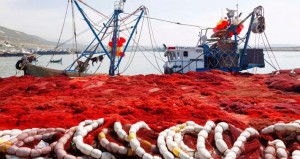The Africa Report
The Haliopolis cluster is key to the government’s plan to raise seafood processing capacity by 70% on 2007 levels – now it is just waiting for the companies to move in.
The growth of Morocco’s seafood-processing sector depends on the nascent Haliopolis industrial centre just outside of Agadir, but it is already facing some of the problems that have hindered similar projects.
As part of the government’s wider Halieutis 2020 Plan for the modernisation of the fisheries sector, the authorities launched initial works on the 150ha Haliopolis industrial park at Drarga on the outskirts of Agadir in September 2009 to provide facilities that could process 500,000tn of seafood per year. The Dh6.6bn ($678m) Haliopolis project is also slated to create more than 20,000 jobs.
Fisheries play a vital role in the economy. The fishing sector in Morocco accounts directly for more than 60,000 jobs and contributes about 2-3% to gross domestic product. Morocco’s fishery production in marine waters was 1.2m tonnes in 2012, which was the largest catch in Africa, according to the UN Food and Agriculture Organisation.
The government plans to increase the country’s processing capacity from 1m tonnes per year in 2007 to 1.7m in 2020. The four-phase Haliopolis complex will house companies involved in processing, packaging, logistics and research.
1.7m
The Haliopolis
project will
help the
government
hit its target
of boosting
its fish
processing
capacity
to almost
2m by 2020
“It’s an industrial zone dedicated exclusively to the processing of seafood, and it’s the first of its kind in the country,” says Mohamed Bouayad, president of the Agadir Haliopole association, which was created in 2011 to support the competitiveness of companies in the sector.
Saâd Harket, Director General of the Haliopolis, is convinced that the initiative has won over companies in the industry. The Haliopolis has now allocated plots to 131 companies.
“The first phase of the project – the second, third and fourth phases will be dedicated to the building of a 74ha (gross) Agropole – was delivered in early 2012. It covers 76ha (gross) and comprises the total area of the park dedicated to fish processing industries as well as companies involved in support, services and logistics.
The latter range from companies providing the raw products and manufacturers of containers to those providing services such as recruitment, accounting and regional and international transport,” Harket explains.
Rigorous selection
One challenge for the Haliopolis is to avoid errors of earlier projects. In the Tassila, Aït Melloul and Sidi Bibi industrial zones, companies abandoned their projects, causing the sites to sit vacant.
At the Haliopolis, “plots are only allocated to companies with concrete projects and to investors who justify the area requested, the cost of the project, how it will be financed and the estimated profitability,” adds Harket.
Despite the rigorous measures adopted, only five companies are currently constructing facilities. Pélagique Industrie, a local fish canning company that employs about 500 people, is developing 40,000 square metres.
The slow progress raises questions about the commitment of companies that have signed up and the effectiveness of the 24-month deadline to begin work on their plots.
Nonetheless, Harket claims there is no cause for alarm. “The arrival of the economic crisis slowed down the momentum a bit. Since then, things have picked up and one [company] has promised to finish its factory by the end of 2015.”
Ali Rgubi, the Chief Executive of Pélagique Industrie, concurs with this assessment: “We began construction in March, and we’re looking to finish by the end of the year, inshallah [God willing]. They [the Haliopolis] are very serious, so we haven’t had any problems.”
Should the Haliopolis deliver as its executives predict, the much-anticipated progress for Morocco’s processing industry might be just around the corner. If not, grand plans for the fisheries industry may end up in the can once more.








